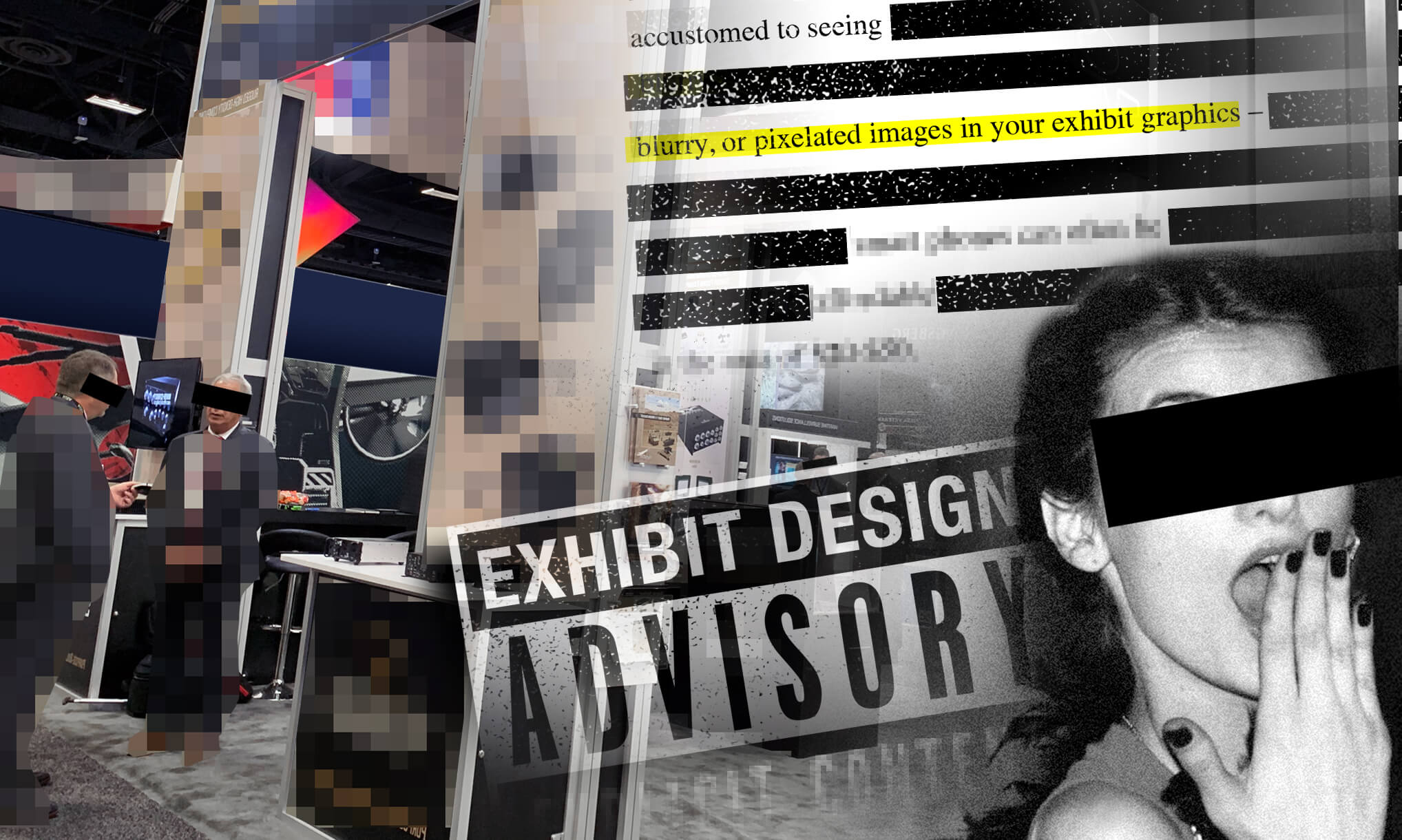Graphic Design Tips for Trade Show Exhibitor
Simple tips for making the most of your exhibit graphics

Well-designed graphics in your exhibit can be the single factor that elevates a booth from just ‘okay’ to great. With that in mind, we’ve put together three simple tips to help you make the most of your exhibit graphics.
1. KISS: Keep It Simple. Seriously.
It seems almost too good to be true. Hundreds and hundreds of square feet of graphics. Finally, room for you to include all those things you couldn’t fit into your brochure. It feels limitless. Endless opportunities to tell potential customers everything about you! Don’t even think about it.
Just because you CAN fill every square inch of your exhibit graphics with charts, graphics, technical info, and product features doesn’t mean you should. The simpler the story you tell and the more readable the message, the more absorption and retention for your audience.
Consider a billboard: It’s an enormous medium with simple messaging. The same holds true for exhibit graphics. Although your audience is strolling by in the aisles rather than zooming past on the freeway at 60 mph, the basic objectives remain: Get attention, cut through the visual noise, and let them know who you are and what you do.
Aside from effectiveness, there’s a practical reason for the “less is more” approach. The more detail you include in your graphics, the more you undermine their longevity. Things like comprehensive product listings or technical information can quickly become outdated, requiring the reprinting of graphics. This will increase your exhibit costs, impacting your ROI for future shows. Save the details for a handout or motion graphic.
2. Image is (almost) Everything
As superficial as this may sound, it’s true, more now than ever. The proliferation of smartphones and prosumer DSLRs means the printed image that audiences are now accustomed to seeing is both infinitely higher in quality and lower in cost. That built-in expectation that our eyes now have means there’s no longer any excuse for poor quality, blurry, or pixelated images in your exhibit graphics – regardless of scale. This doesn’t mean incurring the expense of a professional photographer, either. Photos taken with recent smartphones can often be enlarged to fill a 20’ wide graphic. Alternatively, affordable online stock photo resources abound, with average image costs of $20-$50.
Terms like “resolution” and “dpi” can seem overly technical and confusing to non-designers, but you don’t have to be a pro to get great results. Just arm yourself with these few basic rules when developing your exhibit graphics:
- Don’t expect to pull something off your website and blow it up
- Don’t expect to copy and paste out of a PowerPoint
- A low-quality, blurry image can’t be “photoshopped” to make it printable
